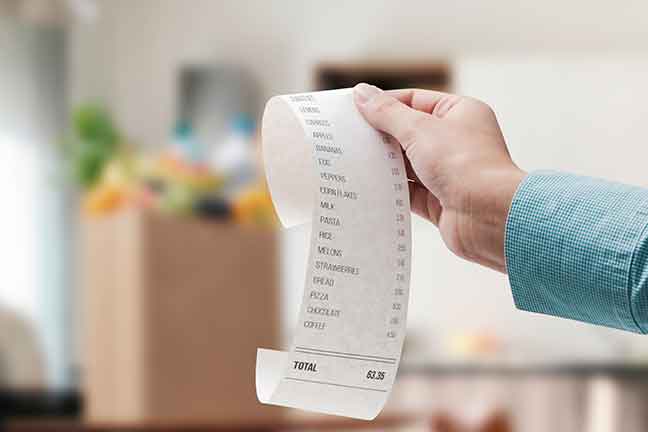In today’s economy, managing household expenses can be challenging, especially when it comes to grocery shopping. This blog will guide you through various effective strategies to help you lower your grocery bill without compromising on the quality of your meals.
1. The Art of Smart Shopping
Planning is key! Start with meal planning for the week and create a comprehensive grocery list. This approach not only saves time but also prevents impulse purchases. Align your meal plan with a realistic budget to keep your grocery spending in check. Remember, a little planning goes a long way in saving money.
2. Avoid Shopping on an Empty Stomach
Shopping on an empty stomach is a surefire way to end up with a cart full of items you didn’t plan to buy. Hunger pangs can lead to impulse purchases, often of unhealthy, high-calorie snacks or processed foods. This not only deviates from your intended grocery list and budget but also impacts your dietary choices.
To prevent this, eat a healthy snack or meal before you go grocery shopping. Doing so will help you focus on your list, make healthier choices, avoid impulse purchases, and avoid unnecessary spending. This simple habit ensures you buy what you need and also contributes to reducing food waste, ultimately saving money.
3. Resist the Temptation: Understanding Reciprocity in Free Sample Marketing
When walking the aisles of a grocery store, it’s common to encounter free samples.
While these can be a delightful part of the shopping experience, it’s important to be aware of the psychological principle of reciprocity, which advertisers often leverage. This principle suggests that when someone does something for us, we naturally want to return the favor.
In the context of free samples, this can manifest as a feeling of obligation to purchase the product you’ve just tried for free.
However, it’s crucial to recognize this tactic and not feel guilted into buying something you don’t need or want. Always remember that the choice to purchase should be based on your need or desire for the product, not out of a sense of obligation created by a marketing strategy.
Being aware of this tactic allows you to enjoy free samples without feeling pressured to make an unnecessary purchase.
4. Choosing the Right Grocery Stores for Maximum Savings
To save money on groceries, consider shopping at various types of discount grocery stores known for their affordability:
- Discount Superstores: Walmart is a great option for one-stop shopping, offering low prices on both name-brand and store-brand goods.
- Local Service-Oriented Stores: Winn Dixie is known for its excellent customer service and community-focused approach, and often partners with money-saving apps.
- Dollar Stores: Dollar General is ideal for shelf-stable items and has a wide range of affordable groceries.
- Bulk Buying Stores: Costco is the go-to for purchasing in bulk, especially for nonperishable foods and household goods.
- Private Label Discount Stores: Save A Lot and Ford Lion offer a variety of store brands
- Convenience-Focused Stores: Aldi is recognized for its convenience and smaller store size, making shopping quick and easy.
Each store type has unique features that can help you save money, whether through low prices, bulk buying, or store brand quality. It’s worth exploring the different stores and options to see which matches best with your shopping needs and preferences.
Tip: Use the SNAP Retail locator to find out which stores in your area accept SNAP EBT benefits. Even if you don’t qualify for SNAP you can find most grocery stores offering discounts or store-brand items.

5. Money-Saving Tips at the Store to Boost Your Grocery Budget
When at the store, always compare prices. Look for bulk buying options for non-perishable items as they often come cheaper. Consider buying fresh fruits and vegetables that are in season to save costs. Opting for store brands over name brands can also significantly reduce your bill as they often offer the same quality at a lower price.
6. Understanding the Difference Between Name Brand and Store Brand Items
Choosing between name-brand and store-brand items can greatly affect your grocery bill. Name brands are often more expensive due to the high costs of marketing and advertising, which are factored into their pricing. Store brands, conversely, are typically made by the same manufacturers as name brands but have lower prices due to less marketing expenditure. These store brands, often nearly identical in quality and ingredients to their name-brand counterparts, offer significant savings without compromising on quality.
Many consumers find that store brands match or even exceed the quality and taste of name brands, as revealed in blind taste tests. Opting for store brand products, therefore, can be a financially savvy choice, allowing you to enjoy similar quality products at a more affordable price. This understanding of food prices can help you make informed decisions at the grocery store, leading to substantial savings while maintaining the quality of your pantry items.
7. Leveraging Technology and Resources
In the digital age, technology can be a great ally in saving money. Utilize grocery and coupon apps like Ibotta, The Coupons App, and ShopSavvy. These apps offer cash back rewards, deals, and price comparison features. Additionally, joining store loyalty programs can offer you exclusive discounts and rewards.

8. How to Save Money with Smart Food Choices
Incorporate less expensive protein sources like beans and lentils into your diet. Be mindful of food waste; use leftovers creatively to make new meals. Including vegetarian meals a few times a week can also be lighter on your wallet.
9. Understanding Sales and Discounts
Get familiar with the sales cycles of your favorite stores and plan your shopping accordingly. Couponing can be extremely beneficial – look for coupons in apps like Rakuten, Honey, and Drop. Check the front entrance flyers to find lower prices and spend less on everyday items.
10. Additional Strategies
Make use of your freezer to store bulk purchases or leftovers. Community resources like community gardens local farmers, and food co-ops can offer fresh produce at lower costs. Consider the DIY approach for simple meals and snacks – homemade is often cheaper and healthier.
11. Accessing Government Assistance
If you’re eligible, programs like SNAP (Supplemental Nutrition Assistance Program) can significantly aid in reducing your grocery expenses. They provide financial assistance for purchasing nutritious food, making it easier to manage your grocery budget.
12. Free Cell Phone and Data Service for Eligible Individuals
Eligibility for SNAP, other government assistance, or simply by income may qualify you for FREE cell phone and data services through EASY Wireless under the Lifeline and ACP programs. These benefits include FREE Unlimited Data, helping you stay connected without additional costs.
With this free service, you can easily access grocery apps, go shopping online with digital coupons, and manage your bank accounts and benefit programs. This ensures that you can implement the grocery-saving strategies mentioned above without worrying about data limits.
Learn more about FREE Cell Phone Service from EASY Wireless.

Get Started Saving Money on Your Grocery Shopping
Implementing these strategies can lead to substantial savings on your grocery bills. From your food budget to smart planning and leveraging technology to understanding sales and making smart food choices, every little change can add up to big savings. Remember, reducing your grocery bill is possible with the right approach and tools.
In this comprehensive guide, we’ve provided a multitude of strategies and resources to help you lower your grocery bill. By integrating these practices into your grocery staples and your shopping routine, you can achieve significant savings while maintaining a healthy and balanced diet.


